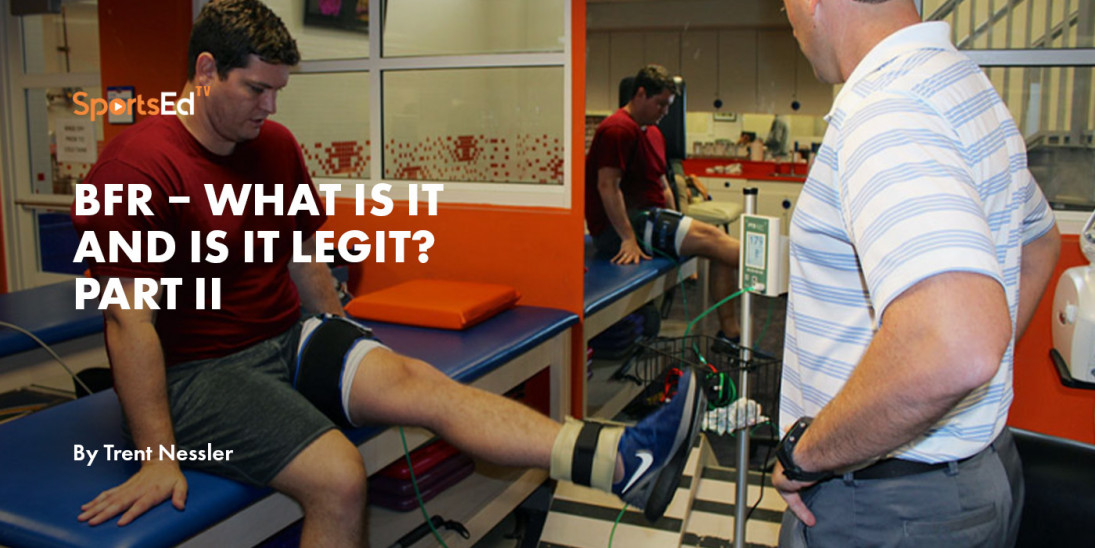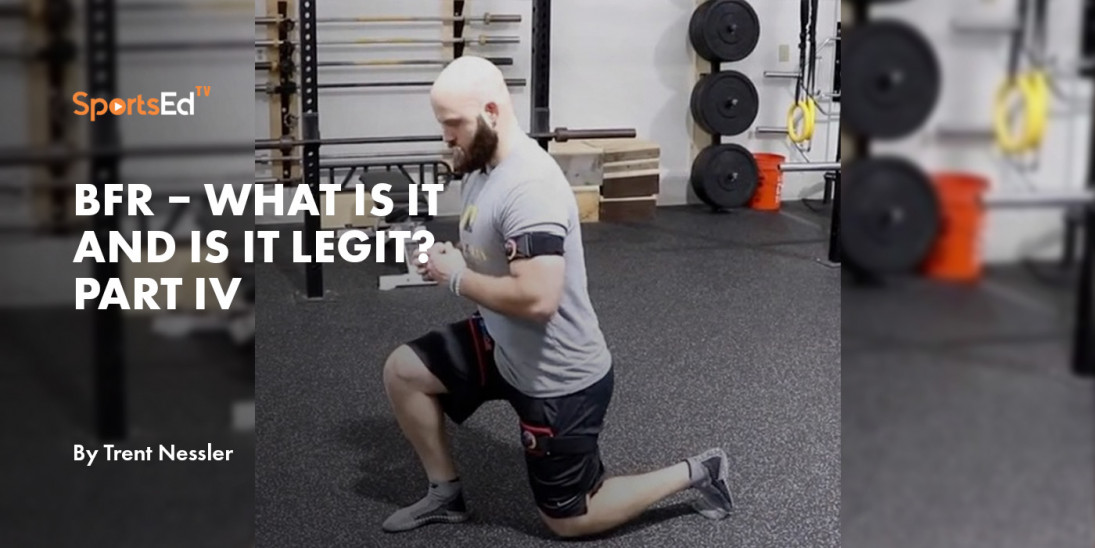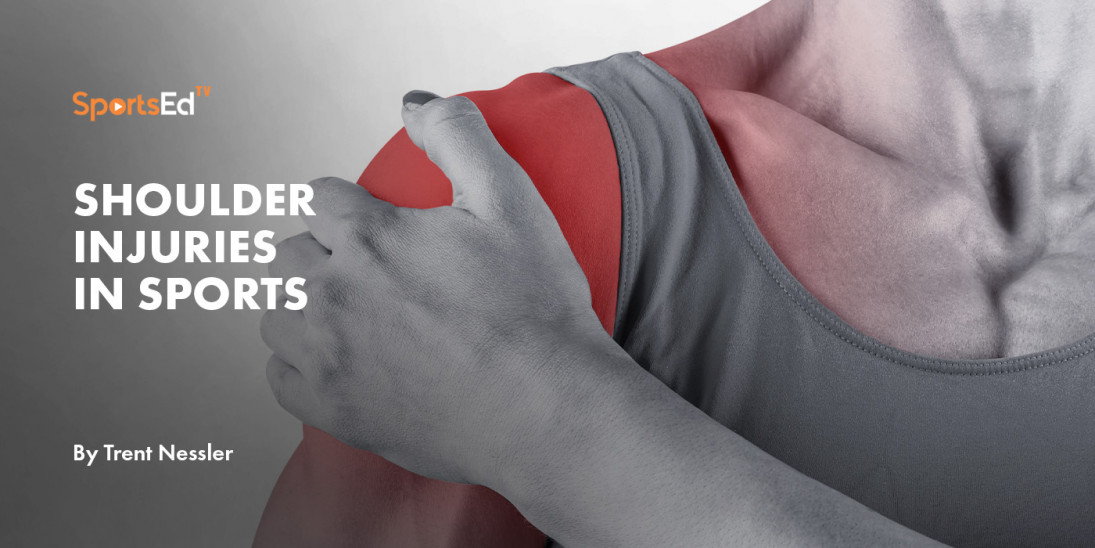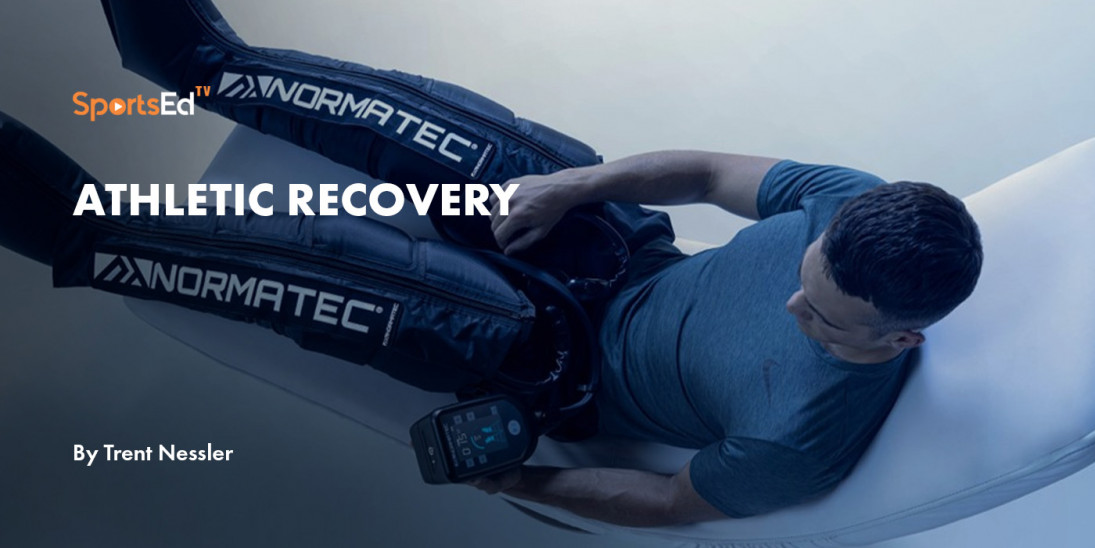Health
Welcome and thanks for visiting...

BFR – What Is It and Is It Legit? Part II

In the previous article, we began our discussion around what blood flow restriction (BFR) training is. We talked in simplistic terms of how BFR works and the impact that this has locally (increase in motor unit recruitment) and systemically (hormonal release). As I mentioned in the last blog, use of BFR results in:
- Increased production of Growth Hormone (GH) which aids in muscle repair and muscle growth
- Increased production of Insulin Growth Factor – 1 (IGF-1) which aids in muscle and bone growth
- Suppression of Myostatin which allows for further muscle growth
Since its commercial release and public awareness, the market has been flooded with all types of BFR devices. I will discuss two broad categories but realize there are a lot of variations out there that fall within each. The two broad categories are those devices which full occlude (cut off blood flow) and those that do not. Two of the most common devices that full occlude are the Owens Recovery Unit (or Delfi unit) and Smart Tools. That said, you can take a strap and put around your arm and pull tight enough to fully occlude, but these are the two most commonly used in health care settings. Knowing that these fully occlude and there is some risk associated with this, it is important that those who use have some medical background (athletic trainer, physical therapist, chiropractor) and are properly trained in how to determine limb occlusion pressures (LOP – the pressure which occludes blood flow).
Devices that do not fully occlude include Bstrong cuffs and Rock Cuff. Again, there are others that fall into this category, but these are the most commonly used. It is typically the cuffs that do not fully occlude that I recommend for patients for home use and that I use in more of a performance type setting. These are less likely to be used incorrectly or cause a problem and therefore are safer to be used in a home rehab setting or in fitness. Each manufacturer of these devices (Bstrong and Rock Cuff) has recommendations on how much pressure to use but I typically use five simple observations. I know if the cuff is too tight if:
- Capillary refill is slow – for example someone using on their arms, pinch the fingers and they are slow to refill with blood (return to normal color)
- Fingers become cold to the touch
- No radial pulse
- Individual complains of tingling or numbness
- Unable to perform the exercise
One of the biggest misconceptions out there is that BFR is dangerous. If you were to use a device that fully occludes and are not properly trained in the use and application, then yes this would be dangerous. But if you are using a device that does not fully occlude and are smart about how you use (just like training), then it is safe. Just like squats done improperly can cause injury, if BFR is done incorrectly, it can cause an injury. Overall, BFR has been used safely in the fitness industry since the mid-70s without much knowledge about how to properly use. The other misconception is that BFR is only effective if you have a cuff that fully occludes. This was first suggested by one of the manufactures who produces one of the cuffs that fully occludes, and we know this simply not to be the case (Dankel et al Physio 2017). Not only does the research show this not to be the case but it also does not make sense. I know I can get both the localized effect and the systemic effect WITHOUT BFR. Simply by lifting heavier loads (80% or more 1RM) results in these same localized and systemic effects. What studies show is that as you increase the amount of occlusion (make the cuff tighter) the resistance you need to elicit the response is less. This is proportional, as one goes up, the other goes down. As pressure goes up, resistance goes down and vice versa. This is great because you can use this on recovery days and still have a huge impact on strength.
The beauty of BFR is that you can get the training affects you would get with heavy lifting days without the normal wear and tear commonly associated with heavy loads. This allows you to get this effect at very low loads. In essence you are tricking the muscle into thinking it is lifting much higher loads. Studies show this not only adds to an increase in muscle hypertrophy but will also increase your 1 RM. To do this, you have to use the BFR specific protocol.
- Resistance = 20-40% 1 RM
- Reps = 30, 15, 15, 15*
- Sets 2-4
*For the rep sequence you apply the pressure and start your reps using this sequence 30 reps, 30 second rest, 15 reps, 30 second rest, 15 reps, 30 second rest, 15 reps and rest for 60 seconds. This is considered one set. Complete 2-4 sets like this and then completely release the pressure on the cuff once the last set is complete.
Although this is an unusual rep and set sequence, this is the most effective sequence when using BFR. That considered, as you become more familiar with BFR and start using it more, you will see there are several different ways you can manipulate these to have the desired effect you are looking for.
In the next article, I will start to talk about some different strength protocols you can use, movement training and how can be leveraged for cardiovascular fitness. I will also give you two personal case studies using two grappling athletes. Stay Tuned next week as talk about getting your swoll on with BFR!
Read more:
BFR – What Is It and Is It Legit?





